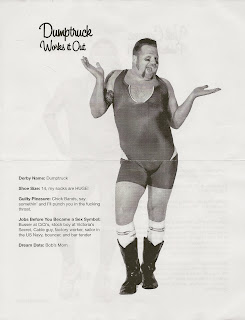 |
| 1 of 12 portraits I drew of my college roommate for a class at the U of I. |
‘What do you want to be when you grow up?’ is a question posed to children probably every year after they start their educational career. The answers go through phases of reality. First are the imaginative princesses and cowboys, then the lofty presidents or rock stars and finally the more obtainable veterinarians, teachers or firefighters. By the time I wanted to be a vet, I was probably in fifth grade and that decision was based on the fact that I liked animals. Then I realized what vets really did and quickly changed my mind.
At a certain point, enough people praised me for being artistic and I liked to draw so… that was it. I was to be an artist. Later I also thought I would become a writer. Or a psychologist. Oh, maybe a journalist! My focus kept coming back to and remaining loosely on art so I started at community college to “figure it out” before I made it to a larger university. I apathetically took a variety of classes and left with an AA degree and still no concrete plan. I chose the University of Iowa Iowa State Iowa
I’m all “grown up” now and it has gotten me zero job and plenty of debt. I went through the cycle of school with just enough planning to keep me moving to the next thing, but then school ran out and I’m left wondering “what’s next?” That has since then snowballed into a deeper thought process about life. Thinking of it on a purely primitive level, we are created to procreate and raise a family. The cycle of life goes on and on, but that can’t be the point of it all, can it? The typical American values are kind of lost on me, marriage and kids, and working a 9-5. This typical mainstream livelihood just depresses me, especially when I’m constantly being surrounded with examples of marriages that don’t stick and seeing people whose personal problems stem from their parents. So my conclusion is that the point of life is to create a place in this world just for me and my happiness.
So what makes me happy? Currently I make coffee for minimum wage and never fill a forty hour workweek. It’s easy and flexible, but I struggle to make ends meet and let’s not think about the debts I need to pay off. It’s depressing and frustrating and hopeless, but I survive because I also play roller derby in the meantime.
 |
| I don't know how they put up with me, really. |
Ah, roller derby. It’s starting to become a cliché it seems, that “roller derby saved my life!” But I know without it I would be completely lost and alone. Everyone I know, hang out with, and even live with is someone from my derby world. It gives me something to think about, plan for, and create for. I never wanted to be a teacher or anything that required me to interact with lots of people. I didn’t want anything to do with commercial art because I thought it was too technical. I was always told I was artistic and creative but never fully believed in it, so I never pushed myself to really become an “artist.” Now derby has dumped all my absolutes at the door, and left me wondering what I really want to do with my life.
 |
| Creating some of the posters for the team has made me want to take some design classes. |
I went through seventeen years of school and never fully committed to anything I wanted to be, and then in two years of roller derby I’ve come to a few conclusions:
I enjoy a full contact sport.
I would be in heaven if I could wear only leggings the rest of my life.
I actually can get along with women.
I like design, networking and advertising after all.
I can only play a bone breaking sport for so long, but now I have a better idea of what else I can be passionate about. It has led me to think about taking some more classes and striving for a practical job that I actually want. I've just been doing things to do things and when I pictured myself at thirty recently, it was blank. It’s kind of nice to live day to day and do only enough to get by, but I like the idea of living above the surface instead of floundering below it.
I also became one of the coaches for our fresh crop of new skaters. It’s not a position I had pictured myself doing, as it falls into the category of teaching and that was something I had crossed off my list long ago. The opportunity presented itself and I found myself really wanting to do it. The whole teacher thing finally clicked with me, that when it’s something you are passionate about, you want to share with other aspiring people the knowledge you have.
 |
| Running some dryland footwork drills with the fresh meat. |
I have always had ideas about life… goals and aspirations, but they never really seemed to make it out of my head. It seems that in this recent assessment of my life, the whole world has opened up. I realize that all I have been doing is bitching and moaning and suggesting to myself how life should be instead of taking action to achieve it. I have got to take a cue from Left 4 Deadwards and just dive into the rest of my life head first. I know I have the potential to do everything I want, I just need to shut up and do it.
-Deadwards
-Deadwards




































